 |
|
IN THIS ISSUE:
» Leveraging Special Dead-Time Control Modes To Optimize GaN-Based Buck Converter Designs
» Stackable Buck Regulators Simplify Multiphase Design
» Energizing Output Filter Inductor Enables Instantaneous PSU Activation
» Focus On Magnetics:
Optimized Magnetics Winding Design (Part 3): Minimized Winding Resistance For Constant Winding Area
» Industry Events: NSREC & ECCE 2025
» Power Products
» Industry Events: Microgrids Summit & DMC 2025
» New in FAE Confidential
» Other Top Power News
From the Editor's Desk David G. Morrison
Editor, HOW2POWER TODAY

September is a good time to catch-up on developments in space power. That’s because two of the best forums for learning about power semiconductors and power converters for space are held within a few weeks of one another each summer. The IEEE Nuclear and Space Radiation Effects Conference (NSREC) is typically held in July, each year in a different but desirable travel destination somewhere in North America. Meanwhile, Small Satellite is held in August in Utah, and in Logan up until this year, when the show’s growth forced a move to Salt Lake City. NSREC is more academic with lots of research-intensive papers and posters, complemented by a focused exhibition on the components, design tools, equipment and test services to design electronics for space. Small Satellite is more industry oriented with a large expo addressing the whole spectrum of companies, products and services for designing, building, launching and managing operation of satellites in low earth orbit. One thing these events have in common is that they’re both excellent venues for learning about the latest rad tolerant and rad hard components, including power products. Despite the overlap, each one offers additional power-related learning opportunities—one where you can interact with those who design and test electronic components for radiation environments; the other where you can speak with the users of those components who develop electrical power systems for satellites. This issue features the first of three reports from these space conferences— an article on the evolution of SiC power semiconductors for space. This will be followed in the coming weeks by articles on the specific power devices presented at NSREC 2025 and at Small Satellite. (Watch for these reports in the Space Power section.) This newsletter also presents a sneak preview of the ECCE 2025 expo along with an assortment of in-depth technical articles, power product news, industry headlines and more.
|
|

|
HOW2POWER EXCLUSIVE DESIGN ARTICLES 
|
Leveraging Special Dead-Time Control Modes To Optimize GaN-Based Buck Converter Designs
by James R. Staley, Analog Devices, Durham, N.C.
Synchronous converters operate by alternately toggling a control switch and a synchronous switch device on and off. If the delay (dead time) between turning one switch off and the other on is longer than necessary, efficiency suffers. If the delay is not long enough, shoot-through can cause massive amounts of current flow through the switch pair. This hurts efficiency and can damage components. While these considerations have been well understood, the dynamics change when silicon MOSFETs are replaced with GaN FETs. This article explores the switching dynamics at play when GaN FETs are used for the power stage in synchronous buck converters and how specialized dead-time adjustment modes in two buck controllers can be used to optimize dead time based on design goals for efficiency and reliability. Read the article…
|
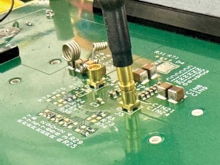
This article also describes techniques
for measuring switch-node waveforms,
which are challenging in the face of
GaN’s fast slew rates. |

|
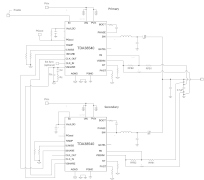
With stackable buck regulators,
system designers can easily expand
the output power with repeated
layout, simplifying the design effort. |
Stackable Buck Regulators Simplify Multiphase Design
by Min Chen, Infineon, El Segundo, Calif. and Vijay Viswanathan, Infineon, Morrisville, N.C.
With the increasing power consumption required by modern POL power systems, more power rails need a maximum output current beyond the capability of a single-phase POL converter. Although multiphase converters can be used for these power rails, a discrete multiphase design increases component count, leading to a higher BOM cost and added design complexity. And there’s extra PCB area and layout effort required to accommodate a multiphase PWM controller and power stages. However, the same multiphase design goals can be achieved using integrated stackable POL converters. These devices provide a more cost effective and compact solution when the total phase count is less than four. In this article, the benefits of analog stackable integrated dc-dc buck regulators in general and the TDA38540 in particular are discussed. Read the article…
|

Energizing Output Filter Inductor Enables Instantaneous PSU Activation
by Viktor Vogman, Olympia, Wash.
Using a cold redundancy technique to wake up a battery backup module allows for accelerated power supply wake-up. It is based on the concept of precharging output capacitors to their steady-state voltage levels. In this non-resonant transition case, a soft start is not required, as only the output filter inductor needs to be charged to the current matching the current consumed by the load. Although a full power stage activation in this case typically lasts only a few hundred microseconds, the usage of this technique still requires much larger dc bus capacitor values than would be needed in the “ideal” instantaneous wakeup case. To overcome this limitation, this article discusses the opportunity to “precharge” the output filter inductor along with the output capacitor, to further accelerate the backup module activation process. Read the article…
|
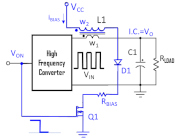
The components in blue comprise a
circuit for energizing the inductor
core such that when the high frequency
converter is turned on, the inductor
can instantly supply full load current. |


FOCUS ON MAGNETICS 
Sponsored by Payton Planar Magnetics
A monthly column presenting information on power magnetics design, products, or related technology |
Optimized Magnetics Winding Design (Part 3): Minimized Winding Resistance For Constant Winding Area
by Dennis Feucht, Innovatia Laboratories, Cayo, Belize
In the first two parts of this series, magnetics winding design optimization was explained for constant layers and constant strands per turn bundle and some design formulas were given. In this third part, the most useful formulas are presented based on a fixed allotment of window area in the core to the windings. A given winding thus has fraction kww of the total core window area Aw, and the goal is to determine the optimal wire size for minimum (primary-referred) winding resistance Rwp.
Read the article…
|

 |
 |

 |

|

INDUSTRY EVENTS
 |
|
NSREC 2025 Special Report—Sponsored by Renesas
The Path To Radiation Hardened SiC MOSFETs And Schottkies For Space Flight
by Paul L. Schimel, Contributor, How2Power.com
This article will attempt to walk through the evolution of silicon carbide (SiC) power devices toward rad-hard applications. The path will lead through a brief introduction to the devices, susceptibility to various radiation events, testing, work updates and a few notions on what we can do to fly SiC in space in the near and distant future with references to fundamental supporting works. This includes discussion of developments presented at the recent IEEE Nuclear & Space Radiation Effects Conference (NSREC 2025), which was held July 14-18 in Nashville. Read the full story…
|
|
ECCE 2025 Expo Will Highlight Latest Tools And Instruments For Designing Power Electronics
by David G. Morrison, Editor, How2Power.com
At the upcoming IEEE Energy Conversion Congress & Expo (ECCE 2025) Oct. 19-23 in Philadelphia, approximately 60 companies will showcase their latest design tools, test instruments, components, and other wares useful in the development of power electronics, electric machines and their end applications. In addition, 10 universities and one national laboratory will highlight their latest research in the expo. The conference will be further supported by 16 corporate sponsors, including GM, which will also be featured in the expo. This article presents a sampling of some of the products that exhibitors will be showing and demonstrating this year. Read the full story…
|
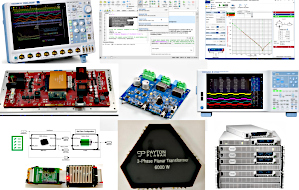
|

 |

|

POWER PRODUCTS  |

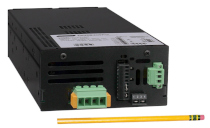
Acopian Power Supplies’ LP2
switching power supplies. |
Low-Profile Power Supplies With Wide Adjustment Ranges Deliver Up To 900 W
 Photo: These power supplies offer many options for single dc outputs from 5 V to 125 V or wide-adjustment dc outputs from 0 to 5 V up to 0 to 125 V. All models are voltage and current programmable. Highly configurable, these supplies are suited for use in test equipment, analog systems, power, military, aerospace, manufacturing, controls, medical, aviation, R&D and other applications. Photo: These power supplies offer many options for single dc outputs from 5 V to 125 V or wide-adjustment dc outputs from 0 to 5 V up to 0 to 125 V. All models are voltage and current programmable. Highly configurable, these supplies are suited for use in test equipment, analog systems, power, military, aerospace, manufacturing, controls, medical, aviation, R&D and other applications.
See the full story…
|

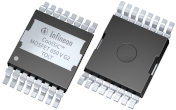
Infineon Technologies’ CoolSiC
G2 MOSFETs. |
75-mΩ 650-V SiC MOSFETs Target Medium-Power Applications
 Photo: The CoolSiC 650-V G2 portfolio is now extended with 75-mΩ variants to meet the demand for more compact and powerful systems. These transistors are available in a variety of package options to suit either top-side or bottom-side cooling. Photo: The CoolSiC 650-V G2 portfolio is now extended with 75-mΩ variants to meet the demand for more compact and powerful systems. These transistors are available in a variety of package options to suit either top-side or bottom-side cooling.
See the full story…
|


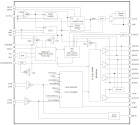
Renesas Electronics’ RAA489300
and RAA489301 controllers. |
Buck Controllers Implement Three-Level Topology For Efficient USB-C Power Solutions
 Photo: The controllers are designed for a three-level buck topology, which delivers exceptional efficiency and significantly reduces the required inductance for output voltage regulation. Additionally, these ICs ensure a seamless switching mode transition across the entire output voltage range. Photo: The controllers are designed for a three-level buck topology, which delivers exceptional efficiency and significantly reduces the required inductance for output voltage regulation. Additionally, these ICs ensure a seamless switching mode transition across the entire output voltage range.
See the full story…
|


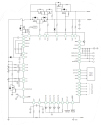
Texas Instruments’ BQ41Z90
and BQ41Z50 fuel gauges. |
Fuel Gauge ICs Enable More-Precise Battery Monitoring In Laptops And E-bikes
 Diagram: The fully integrated fuel gauges with Dynamic Z-Track technology help engineers design electronic devices with more-accurate battery capacity readings, even under unpredictable loads. They measure state of charge with an error of just 1%. Diagram: The fully integrated fuel gauges with Dynamic Z-Track technology help engineers design electronic devices with more-accurate battery capacity readings, even under unpredictable loads. They measure state of charge with an error of just 1%.
See the full story…
|


|

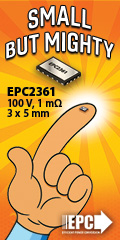






|

INDUSTRY EVENTS
 |
|
Distributed Energy Resources Community To Convene At Microgrids & Energy Resilience Summit
On October 22-23, in National Harbor, MD, DSI’s 2nd Annual Microgrids & Energy Resilience Summit will bring together senior leaders from the Department of Defense, federal agencies, and the energy sector to explore how cutting-edge microgrid technologies are strengthening energy security, operational reliability, and mission readiness across U.S. military installations. The 2025 summit will spotlight ongoing and future initiatives aimed at deploying scalable, cyber-secure microgrids that reduce energy vulnerabilities, ensure uninterrupted operations in contested or degraded environments, and bolster energy assurance at both domestic bases and forward-operating locations. Read the full story…
|
|
DMC Explores Design Automation, Cybersecurity And AI/ML Methodologies For Power Electronics
On Nov 17-19, 2025, the IEEE Power Electronics Society (PELS) will host the Design Methodologies Conference in Fayetteville, Arkansas bringing together design automation, artificial intelligence, machine learning, and cyber-physical security methodologies for power electronics applications. The conference will be hosted at the Graduate Hotel, located just off Fayetteville’s Historic Downtown Square. Read the full story…
|

NEW IN FAE CONFIDENTIAL
 |
|
In Search Of The Mythical Business Case
As experienced design engineers were replaced by professional marketing managers in semiconductor companies, the role of the field application engineer (FAE) in helping define new products was diminished. Customer requirements—as filtered through the experience and judgement of the FAEs—were no longer viewed as sufficient input for product development. Instead, a business case was required. In this commentary, Kevin Parmenter recounts his experiences with this and other changes in semiconductor marketing strategy.
Visit this section …
|

 |
 |

OTHER TOP POWER NEWS
|
|
 Axcelis has announced a joint program with GE Aerospace to develop 6.5- to 10-kV superjunction power devices. Axcelis has announced a joint program with GE Aerospace to develop 6.5- to 10-kV superjunction power devices.
 The International Conference on Compound Semiconductor Manufacturing Technology (CS MANTECH) has issued its first call for papers for next year’s conference. The International Conference on Compound Semiconductor Manufacturing Technology (CS MANTECH) has issued its first call for papers for next year’s conference.
 X-FAB Silicon Foundries is building on its expertise in GaN processing technology for high-power applications by introducing GaN-on-Si foundry services for d-mode devices. X-FAB Silicon Foundries is building on its expertise in GaN processing technology for high-power applications by introducing GaN-on-Si foundry services for d-mode devices.

|



 The global supercapacitors market is expected to reach $4.86 billion by 2036, according to a report from IDTechEx. The global supercapacitors market is expected to reach $4.86 billion by 2036, according to a report from IDTechEx.
 Infineon has signed a memorandum of understanding with Lingji to develop high-performance GaN-based inverters for light electric vehicles. Infineon has signed a memorandum of understanding with Lingji to develop high-performance GaN-based inverters for light electric vehicles.
 Pulsiv, developer of the OSMIUM technology for ac-dc front-end conversion, has signed a global stocking agreement with distributor Farnell. Pulsiv, developer of the OSMIUM technology for ac-dc front-end conversion, has signed a global stocking agreement with distributor Farnell.




 ReVolt Fuel’s electric charging vehicles, which use Vicor’s power modules, replace diesel/gas generators on Hollywood movie sets. ReVolt Fuel’s electric charging vehicles, which use Vicor’s power modules, replace diesel/gas generators on Hollywood movie sets.
 ROHM Semiconductor and automotive supplier Schaeffler have announced production of a high-voltage inverter brick equipped with ROHM’s SiC MOSFET bare chips. ROHM Semiconductor and automotive supplier Schaeffler have announced production of a high-voltage inverter brick equipped with ROHM’s SiC MOSFET bare chips.




ABOUT THIS NEWSLETTER: Thank you for reading HOW2POWER TODAY.
How2Power sends no more than one e-mail per month to registered users. Continuing your subscription ensures you'll receive future newsletters. Manage Your Subscription
©2020 All rights reserved. www.how2power.com
|
|